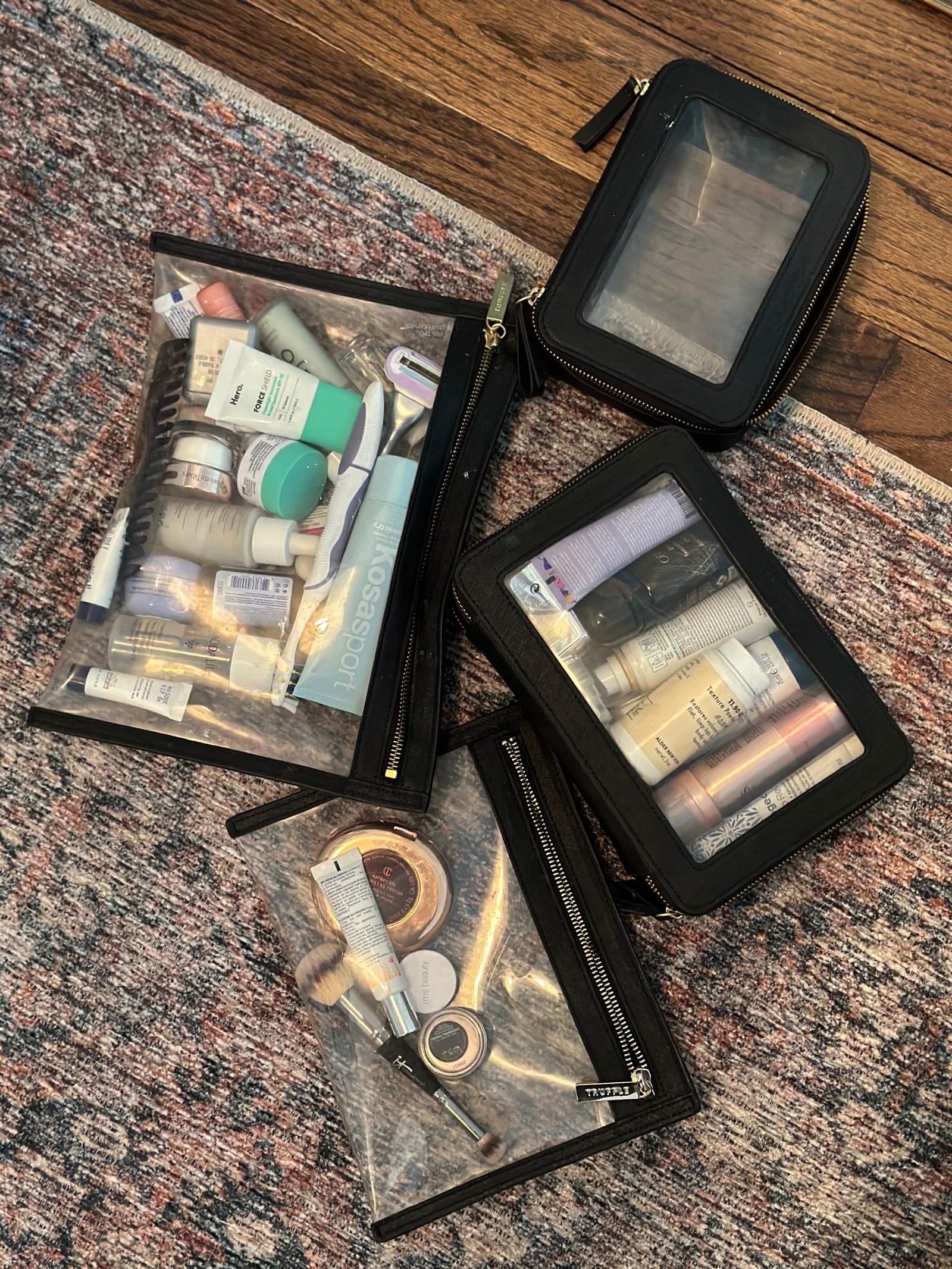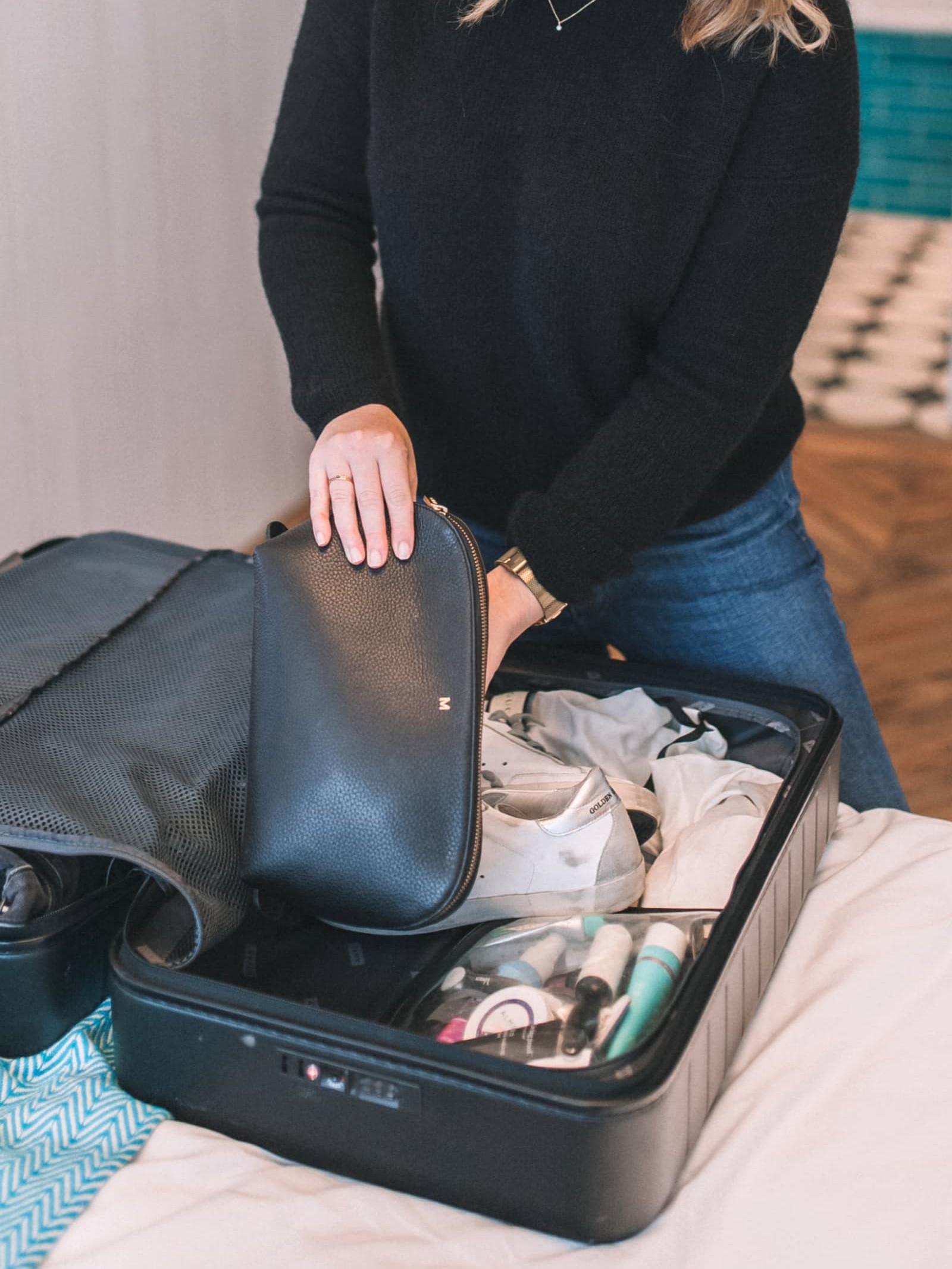Planning a trip to Europe and wondering what to pack? Must-have travel items for Europe are essential for a smooth and enjoyable journey. SIXT.VN offers comprehensive travel solutions, ensuring you’re well-prepared for your European adventure. From versatile clothing to essential electronics and travel documents, we’ll guide you through the must-have items, helping you create unforgettable travel experiences.
1. Why Are Must-Have Travel Items For Europe Important?
Must-have travel items for Europe are important because they ensure your trip is comfortable, safe, and enjoyable. Packing the right items helps you navigate different climates, cultural norms, and travel situations, making your European adventure hassle-free.
Traveling to Europe requires careful planning, and packing the right items is a crucial part of that process. Overpacking can lead to unnecessary stress and baggage fees, while underpacking can leave you unprepared for various situations. Knowing what to include in your suitcase ensures you’re ready for anything Europe throws your way. Let’s explore the importance of must-have travel items for Europe:
- Comfort and Convenience: Packing comfortable clothing, shoes, and accessories ensures you can explore European cities and landmarks without discomfort. For instance, comfortable walking shoes are essential for navigating cobblestone streets and long museum visits.
- Adaptability to Weather: Europe’s weather can be unpredictable, with variations depending on the season and region. Packing layers, a waterproof jacket, and versatile clothing allows you to adjust to changing weather conditions.
- Cultural Appropriateness: Being mindful of local customs and dress codes is important in many European countries. Packing modest clothing options ensures you’re respectful of cultural norms when visiting religious sites or traditional areas.
- Health and Safety: Carrying essential medications, a first-aid kit, and travel insurance documents ensures you’re prepared for any health-related issues or emergencies that may arise during your trip.
- Technology and Connectivity: Packing a universal adapter, portable charger, and necessary electronics ensures you stay connected and can use your devices without issues. This is particularly important for navigation, communication, and entertainment.
- Security and Peace of Mind: A secure travel bag, passport holder, and copies of important documents help protect against theft and loss, providing peace of mind while you travel.
Packing strategically ensures you have everything you need without being weighed down by unnecessary items. This allows you to focus on enjoying your trip and creating lasting memories. According to research from the European Travel Commission in 2023, travelers who pack essential items report higher satisfaction levels and fewer travel-related stress incidents.
 Paris Street Scene
Paris Street Scene
Alt text: People enjoying coffee at a café in Paris, showcasing a typical European city scene
2. What Essential Clothing Items Should I Pack For Europe?
Essential clothing items to pack for Europe include versatile pieces that can be mixed and matched, such as neutral-colored pants, comfortable walking shoes, a waterproof jacket, and layers to adapt to varying weather conditions.
Packing the right clothing for a trip to Europe can make all the difference in your comfort and enjoyment. Europe’s diverse climates and cultural settings require a versatile wardrobe that can adapt to various conditions. Here are some essential clothing items to consider:
- Versatile Tops: Pack a mix of short-sleeved and long-sleeved tops in neutral colors. These can be layered or worn on their own, depending on the weather. Opt for fabrics that are lightweight, breathable, and easy to care for, such as cotton, linen, or merino wool.
- Neutral-Colored Bottoms: Choose pants, skirts, or shorts in neutral colors like black, navy, gray, or beige. These can be easily paired with different tops and are suitable for both casual and semi-formal occasions. Consider fabrics that are wrinkle-resistant and comfortable for walking.
- Comfortable Walking Shoes: Europe’s cities and historical sites often involve a lot of walking, so comfortable shoes are a must. Pack a pair of supportive sneakers, walking shoes, or comfortable boots that you’ve already broken in. Avoid bringing new shoes that might cause blisters or discomfort.
- Waterproof Jacket: A lightweight, waterproof jacket is essential for dealing with Europe’s unpredictable weather. Choose a jacket that is breathable, packable, and has a hood for added protection. Look for features like sealed seams and adjustable cuffs to keep you dry in wet conditions.
- Layers: Europe’s weather can change quickly, so packing layers is crucial. Bring a lightweight sweater, cardigan, fleece jacket, or pashmina that can be easily added or removed as needed. Layers allow you to adjust to varying temperatures without carrying bulky items.
- Dressy Outfit: Pack one or two dressy outfits for evenings out or special occasions. This could include a dress, skirt and blouse, or dress pants and a nice top. Choose outfits that are versatile and can be dressed up or down with accessories.
- Underwear and Socks: Bring enough underwear and socks to last for the duration of your trip, or plan to do laundry along the way. Opt for moisture-wicking fabrics that will keep you comfortable during long days of sightseeing.
- Accessories: Don’t forget essential accessories like a hat, scarf, gloves, and sunglasses. These can provide extra warmth, protection from the sun, and add style to your outfits.
- Swimsuit: If you plan to visit coastal areas or hotels with swimming pools, pack a swimsuit. Choose a swimsuit that is comfortable, quick-drying, and suitable for your planned activities.
Packing these essential clothing items ensures you’re prepared for a variety of situations and can adapt to changing weather conditions and cultural settings. According to a survey by TripAdvisor in 2024, travelers who pack versatile clothing items report higher levels of satisfaction and comfort during their trips.
3. What Toiletries And Personal Care Items Are Necessary For A Trip To Europe?
Necessary toiletries and personal care items for a trip to Europe include travel-sized shampoo, conditioner, and body wash, sunscreen, insect repellent, a toothbrush and toothpaste, and any prescription medications you require.
When preparing for a trip to Europe, packing the right toiletries and personal care items is essential for maintaining your health, hygiene, and comfort. While you can purchase these items in Europe, bringing travel-sized versions of your favorites can save you time, money, and the hassle of searching for familiar brands. Here are the necessary toiletries and personal care items to consider:
- Travel-Sized Toiletries: Pack travel-sized versions of your favorite shampoo, conditioner, body wash, and lotion. These are typically available in TSA-approved sizes (under 3.4 ounces or 100 milliliters) and can save space in your luggage. Consider using refillable travel bottles to reduce waste and save money.
- Sunscreen: Protect your skin from the sun’s harmful rays by packing a broad-spectrum sunscreen with an SPF of 30 or higher. Even on cloudy days, the sun can still cause damage. Choose a sunscreen that is lightweight, non-greasy, and water-resistant.
- Insect Repellent: If you plan to visit rural areas or regions with mosquitoes or other insects, pack insect repellent. Look for a repellent containing DEET or picaridin for effective protection. Consider using a repellent that is specifically formulated for travel and is easy to apply.
- Toothbrush and Toothpaste: Maintain your oral hygiene by packing a toothbrush, toothpaste, and floss. Choose travel-sized versions to save space and weight in your luggage. Consider using a toothbrush cover to keep your toothbrush clean and protected.
- Prescription Medications: If you take any prescription medications, be sure to bring enough to last for the duration of your trip, plus a few extra days in case of delays. Keep your medications in their original containers and carry a copy of your prescription. Check with your doctor or pharmacist about any regulations or restrictions regarding your medications in Europe.
- First-Aid Kit: Pack a small first-aid kit with essential items like bandages, antiseptic wipes, pain relievers, allergy medication, and motion sickness remedies. This can help you handle minor injuries and ailments while traveling. Consider including items like blister pads, diarrhea medication, and hydration tablets.
- Hand Sanitizer: Keep your hands clean while on the go by carrying a travel-sized bottle of hand sanitizer. This is especially important when using public transportation or visiting crowded areas. Choose a hand sanitizer that contains at least 60% alcohol for effective germ-killing action.
- Personal Hygiene Items: Pack any personal hygiene items you need, such as deodorant, feminine hygiene products, and shaving supplies. Choose travel-sized versions to save space and weight. Consider using reusable or eco-friendly options to reduce waste.
- Makeup and Skincare: Bring your essential makeup and skincare products in travel-sized containers. This can help you maintain your beauty routine while on the road. Consider using multi-purpose products to save space and simplify your routine.
Packing these necessary toiletries and personal care items ensures you stay clean, healthy, and comfortable during your trip to Europe. According to a survey by Booking.com in 2023, travelers who pack essential toiletries report higher levels of satisfaction and fewer travel-related inconveniences.
 Toiletries packing list
Toiletries packing list
Alt text: Organized travel cases filled with essential toiletries, making packing efficient and convenient
4. What Travel Documents Should I Bring To Europe?
Travel documents to bring to Europe include your passport, visa (if required), driver’s license, travel insurance information, and copies of important documents stored separately in case of loss or theft.
Having the right travel documents is crucial for a smooth and stress-free trip to Europe. These documents not only allow you to enter and exit countries but also provide identification, insurance coverage, and emergency contact information. Here’s a list of essential travel documents to bring:
- Passport: Your passport is the most important travel document. Ensure it is valid for at least six months beyond your planned stay in Europe. Make a copy of your passport and store it separately in case of loss or theft. Register your trip with your embassy or consulate for assistance in emergencies.
- Visa (If Required): Depending on your nationality, you may need a visa to enter certain European countries. Check the visa requirements for each country you plan to visit and apply well in advance of your trip. Carry a copy of your visa with your passport.
- Driver’s License: If you plan to rent a car and drive in Europe, bring your driver’s license. Some countries may require an International Driving Permit (IDP) in addition to your license. Check the requirements for each country you plan to drive in and obtain an IDP if necessary.
- Travel Insurance Information: Travel insurance can protect you against unexpected medical expenses, trip cancellations, lost luggage, and other emergencies. Bring a copy of your travel insurance policy and contact information for your insurance provider. Understand the coverage limits and exclusions of your policy.
- Copies of Important Documents: Make copies of your passport, visa, driver’s license, travel insurance information, and any other important documents. Store these copies separately from the originals in case of loss or theft. Consider scanning your documents and storing them securely online for easy access.
- Flight and Accommodation Confirmations: Bring printed or electronic copies of your flight and accommodation confirmations. These can help you check in to your flights and hotels more easily. Consider downloading the airline and hotel apps to your smartphone for convenient access to your booking information.
- Emergency Contact Information: Keep a list of emergency contact information, including phone numbers and email addresses for your family, friends, doctor, and embassy or consulate. Store this information in a secure location and share it with a trusted contact at home.
- Credit Cards and Bank Information: Bring your credit cards and debit cards for making purchases and withdrawing cash. Notify your bank and credit card companies of your travel plans to avoid having your cards blocked. Keep a record of your card numbers and emergency contact information in case your cards are lost or stolen.
- Vaccination Records: Depending on your destination, you may need to provide proof of vaccination for certain diseases. Check the vaccination requirements for each country you plan to visit and consult with your doctor about any recommended vaccinations. Keep a copy of your vaccination records with your travel documents.
Having these travel documents readily available can help you navigate your trip with confidence and peace of mind. According to the U.S. Department of State, travelers who are well-prepared with their documents experience fewer travel-related problems and are better equipped to handle emergencies.
5. What Electronics And Accessories Are Useful For Traveling In Europe?
Useful electronics and accessories for traveling in Europe include a universal adapter, portable charger, noise-canceling headphones, a portable Wi-Fi hotspot, and a smartphone with a good camera.
In today’s connected world, having the right electronics and accessories can greatly enhance your travel experience in Europe. These items can help you stay connected, entertained, and prepared for various situations. Here’s a list of useful electronics and accessories to consider:
- Universal Adapter: Europe uses different electrical outlets than the United States, so a universal adapter is essential for charging your devices. Choose an adapter that is compatible with the types of outlets used in the countries you plan to visit. Look for an adapter with multiple USB ports for charging multiple devices at once.
- Portable Charger: Keep your devices powered up while on the go with a portable charger. Choose a charger with enough capacity to fully charge your smartphone, tablet, or other devices. Consider a charger with multiple USB ports for charging multiple devices simultaneously.
- Noise-Canceling Headphones: Block out distractions and enjoy your music or audiobooks with noise-canceling headphones. These are especially useful on planes, trains, and buses. Look for headphones that are comfortable to wear for extended periods and have good sound quality.
- Portable Wi-Fi Hotspot: Stay connected to the internet wherever you go with a portable Wi-Fi hotspot. This allows you to access email, social media, and other online services without relying on public Wi-Fi networks. Choose a hotspot with good battery life and coverage in the countries you plan to visit.
- Smartphone with Good Camera: Capture your travel memories with a smartphone that has a good camera. Look for a phone with high resolution, optical image stabilization, and good low-light performance. Consider bringing a tripod or selfie stick for taking better photos and videos.
- E-Reader or Tablet: Enjoy reading books, magazines, or newspapers on an e-reader or tablet. These devices are lightweight and can store a large number of books. Consider downloading books or magazines before your trip to save on data charges.
- Travel Camera: If you’re serious about photography, consider bringing a dedicated travel camera. Look for a camera that is compact, lightweight, and has good image quality. Consider bringing extra batteries or memory cards.
- Fitness Tracker: Track your steps, distance, and calories burned with a fitness tracker. This can help you stay active and healthy while traveling. Look for a tracker that is waterproof and has good battery life.
- Language Translator: Communicate with locals more easily with a language translator. This can be a dedicated device or an app on your smartphone. Look for a translator that supports multiple languages and has offline capabilities.
Having these electronics and accessories can make your trip to Europe more enjoyable, convenient, and productive. According to a survey by Expedia in 2024, travelers who bring essential electronics report higher levels of satisfaction and fewer travel-related frustrations.
 Meghan at a cafe in Paris
Meghan at a cafe in Paris
Alt text: A woman enjoying a coffee at a Parisian sidewalk café, using her smartphone
6. What Bags And Luggage Should I Use For A Trip To Europe?
Bags and luggage for a trip to Europe should include a durable suitcase with wheels, a comfortable backpack or crossbody bag for day trips, packing cubes for organization, and a collapsible duffel bag for souvenirs.
Choosing the right bags and luggage is essential for a comfortable and efficient trip to Europe. The type of luggage you select will depend on your travel style, the length of your trip, and the activities you plan to do. Here’s a list of bags and luggage to consider:
- Durable Suitcase with Wheels: A durable suitcase with wheels is essential for transporting your belongings through airports, train stations, and hotels. Choose a suitcase that is made of high-quality materials and has sturdy wheels and handles. Consider a suitcase with spinner wheels for easy maneuverability.
- Comfortable Backpack or Crossbody Bag: A comfortable backpack or crossbody bag is essential for day trips and exploring cities. Choose a bag that is lightweight, has adjustable straps, and has enough space for your essentials. Consider a bag with anti-theft features to protect your belongings.
- Packing Cubes: Packing cubes are a great way to organize your belongings and save space in your luggage. Choose cubes that are made of lightweight, breathable materials and come in a variety of sizes. Use different colored cubes to easily identify your items.
- Collapsible Duffel Bag: A collapsible duffel bag is useful for carrying souvenirs or extra items you acquire during your trip. Choose a duffel bag that is lightweight, durable, and can be easily folded up when not in use. Consider a duffel bag with a shoulder strap for comfortable carrying.
- Garment Bag: A garment bag is useful for transporting delicate clothing items such as dresses, suits, or blouses. Choose a garment bag that is made of breathable materials and has padded hangers. Consider a garment bag with pockets for storing shoes and accessories.
- Toiletry Bag: A toiletry bag is essential for keeping your toiletries organized and separate from your other belongings. Choose a toiletry bag that is waterproof and has multiple compartments. Consider a toiletry bag with a hook for hanging in hotel bathrooms.
- Laptop Bag: If you’re traveling with a laptop, choose a laptop bag that is padded and has enough space for your laptop and accessories. Consider a laptop bag with a shoulder strap for comfortable carrying.
- Camera Bag: If you’re traveling with a camera, choose a camera bag that is padded and has enough space for your camera, lenses, and accessories. Consider a camera bag with a rain cover to protect your equipment from the elements.
- Money Belt: A money belt is a discreet way to carry your cash, credit cards, and passport. Choose a money belt that is made of lightweight, breathable materials and can be worn comfortably under your clothing.
Choosing the right bags and luggage can make your trip to Europe more organized, efficient, and enjoyable. According to a survey by Travel + Leisure in 2023, travelers who use packing cubes and durable luggage report higher levels of satisfaction and fewer travel-related frustrations.
 What To Pack For A Trip To Europe
What To Pack For A Trip To Europe
Alt text: An organized suitcase showcasing travel essentials, emphasizing efficient packing for a trip to Europe
7. How Should I Prepare For Rain In Europe?
To prepare for rain in Europe, pack a lightweight waterproof jacket, a compact umbrella, waterproof shoes or boots, and a waterproof bag cover to protect your belongings.
Europe’s weather can be unpredictable, and rain is a common occurrence, especially in certain regions and seasons. Being prepared for rain can help you stay comfortable, dry, and enjoy your trip regardless of the weather. Here’s how to prepare for rain in Europe:
- Lightweight Waterproof Jacket: A lightweight waterproof jacket is an essential item for any trip to Europe. Choose a jacket that is breathable, packable, and has a hood for added protection. Look for features like sealed seams and adjustable cuffs to keep you dry in wet conditions.
- Compact Umbrella: A compact umbrella is a convenient way to stay dry in light to moderate rain. Choose an umbrella that is lightweight, easy to carry, and has a sturdy frame. Consider an umbrella with an automatic open and close function for easy use.
- Waterproof Shoes or Boots: Keep your feet dry and comfortable with waterproof shoes or boots. Choose shoes that are made of waterproof materials and have good traction. Consider shoes that are easy to clean and maintain.
- Waterproof Bag Cover: Protect your belongings from rain with a waterproof bag cover. Choose a cover that is sized to fit your backpack, purse, or other bags. Look for a cover that is made of durable, waterproof materials and has adjustable straps.
- Quick-Drying Clothing: Pack clothing that is quick-drying in case you get caught in the rain. Choose fabrics like nylon, polyester, or merino wool that dry quickly and retain their shape. Avoid cotton, which can take a long time to dry and become heavy when wet.
- Waterproof Phone Case: Protect your smartphone from water damage with a waterproof phone case. Choose a case that is submersible and has a secure seal. Consider a case with a lanyard for easy carrying.
- Travel Towel: A travel towel is a lightweight, quick-drying towel that is useful for drying off after getting caught in the rain. Choose a towel that is made of microfiber or other absorbent materials. Consider a towel that is compact and easy to pack.
- Waterproof Backpack: A waterproof backpack is a great way to protect your belongings from rain. Choose a backpack that is made of waterproof materials and has a roll-top closure. Consider a backpack with padded shoulder straps and a hip belt for comfortable carrying.
- Plan Indoor Activities: Have a list of indoor activities to do in case of rain. This could include visiting museums, art galleries, theaters, or shopping malls. Check the weather forecast before you go and plan your activities accordingly.
Preparing for rain can help you stay comfortable, dry, and enjoy your trip to Europe regardless of the weather. According to a survey by the European Meteorological Society in 2024, travelers who are prepared for rain report higher levels of satisfaction and fewer travel-related disruptions.
 Trench coat and jeans outfit
Trench coat and jeans outfit
Alt text: A woman wearing a stylish trench coat, perfect for handling rainy weather in Europe
8. How Can SIXT.VN Help With My Trip To Europe?
SIXT.VN can help with your trip to Europe by providing airport transfer services, hotel booking assistance, tour and attraction ticket booking, and comprehensive travel advice tailored to your needs.
Planning a trip to Europe involves numerous details, from transportation to accommodation and activities. SIXT.VN offers a range of services designed to simplify your travel arrangements and ensure a smooth, enjoyable experience. Here’s how SIXT.VN can assist with your trip to Europe:
- Airport Transfer Services: SIXT.VN provides reliable and convenient airport transfer services to and from airports across Europe. Whether you need a private car, shuttle, or taxi, SIXT.VN can arrange transportation to your hotel or other destination. This saves you time and hassle, especially after a long flight.
- Hotel Booking Assistance: Finding the right accommodation is crucial for a comfortable trip. SIXT.VN offers hotel booking assistance, helping you find hotels that meet your needs and budget. Whether you’re looking for a luxury hotel, budget-friendly guesthouse, or centrally located apartment, SIXT.VN can help you find the perfect place to stay.
- Tour and Attraction Ticket Booking: Europe is home to countless attractions and landmarks, and SIXT.VN can help you book tickets for tours and attractions in advance. This saves you time and ensures you don’t miss out on popular sights. From guided tours of historical sites to skip-the-line access to museums, SIXT.VN can arrange it all.
- Customized Itineraries: Planning a trip to Europe can be overwhelming, but SIXT.VN can create customized itineraries tailored to your interests and preferences. Whether you’re interested in history, culture, food, or outdoor activities, SIXT.VN can design an itinerary that meets your needs. This saves you time and ensures you experience the best of Europe.
- Travel Advice and Support: SIXT.VN provides travel advice and support to help you navigate your trip with confidence. Whether you need information about visa requirements, local customs, or transportation options, SIXT.VN can provide expert guidance. This helps you avoid potential problems and make the most of your trip.
- Car Rental Services: If you plan to explore Europe at your own pace, SIXT.VN offers car rental services. Choose from a wide range of vehicles to suit your needs, from compact cars to luxury SUVs. This gives you the freedom to explore the countryside, visit remote villages, and discover hidden gems.
- 24/7 Customer Support: SIXT.VN offers 24/7 customer support to assist you with any questions or issues that may arise during your trip. Whether you need help with your booking, have a problem with your transportation, or need emergency assistance, SIXT.VN is available to help.
By offering these services, SIXT.VN makes it easier to plan and enjoy your trip to Europe. According to a survey by the European Travel Agents Association in 2023, travelers who use travel agencies like SIXT.VN report higher levels of satisfaction and fewer travel-related problems.
Contact SIXT.VN today at Address: 260 Cau Giay, Hanoi, Vietnam, Hotline/Whatsapp: +84 986 244 358, or visit our website at SIXT.VN to learn more about our services and start planning your European adventure.
 Europe trip packing
Europe trip packing
Alt text: A neatly packed suitcase ready for a European trip, illustrating the benefits of organized travel
9. What Are Some Packing Tips For Traveling To Europe?
Packing tips for traveling to Europe include making a packing list, rolling your clothes to save space, wearing your heaviest items on travel days, and checking the weather forecast before you pack.
Packing efficiently and effectively can make your trip to Europe more enjoyable and less stressful. Here are some helpful packing tips to consider:
- Make a Packing List: Create a detailed packing list before you start packing. This helps you stay organized and ensures you don’t forget any essential items. Divide your list into categories such as clothing, toiletries, electronics, and documents.
- Roll Your Clothes: Rolling your clothes instead of folding them can save space in your luggage and reduce wrinkles. Roll each item tightly and secure it with a rubber band or packing cube.
- Wear Your Heaviest Items: Wear your heaviest items, such as shoes, jackets, and jeans, on travel days to save space and weight in your luggage. This also frees up space for lighter items.
- Check the Weather Forecast: Check the weather forecast for each destination you plan to visit and pack accordingly. This helps you avoid packing unnecessary items and ensures you have the right clothing for the weather conditions.
- Use Packing Cubes: Packing cubes are a great way to organize your belongings and save space in your luggage. Use different colored cubes to easily identify your items.
- Bring Travel-Sized Toiletries: Bring travel-sized versions of your favorite toiletries to save space and weight in your luggage. You can purchase these items at most drugstores or supermarkets.
- Pack Versatile Clothing: Pack clothing items that can be mixed and matched to create multiple outfits. Choose neutral colors that can be easily paired with different tops and bottoms.
- Leave Extra Space: Leave some extra space in your luggage for souvenirs and other items you may acquire during your trip. You can also bring a collapsible duffel bag for extra storage.
- Weigh Your Luggage: Weigh your luggage before you go to the airport to avoid overweight baggage fees. You can use a luggage scale or ask the airline for assistance.
- Keep Valuables with You: Keep your valuables, such as your passport, credit cards, and jewelry, with you at all times. Store them in a secure location, such as a money belt or hidden pocket.
- Prepare for Security: Be prepared for airport security by having your liquids in a clear plastic bag and removing your shoes, belt, and jacket. This helps you get through security quickly and easily.
Following these packing tips can help you pack efficiently, save space, and avoid unnecessary stress during your trip to Europe. According to a survey by Condé Nast Traveler in 2024, travelers who follow these packing tips report higher levels of satisfaction and fewer travel-related problems.
 Cafe Pigalle Paris Khaite Sneakers J.Crew Trousers Fall Outfit
Cafe Pigalle Paris Khaite Sneakers J.Crew Trousers Fall Outfit
Alt text: A stylish and comfortable outfit worn at a café in Paris, ideal for exploring European cities
10. What Are Some Common Mistakes To Avoid When Packing For Europe?
Common mistakes to avoid when packing for Europe include overpacking, not checking the weather forecast, forgetting essential documents, and not bringing a universal adapter.
Packing for a trip to Europe can be challenging, and it’s easy to make mistakes that can lead to frustration and inconvenience. Here are some common mistakes to avoid:
- Overpacking: Overpacking is one of the most common mistakes travelers make. It can lead to heavy luggage, extra baggage fees, and unnecessary stress. Avoid overpacking by making a packing list and sticking to it.
- Not Checking the Weather Forecast: Not checking the weather forecast before you pack can lead to packing the wrong clothing items. Check the weather forecast for each destination you plan to visit and pack accordingly.
- Forgetting Essential Documents: Forgetting essential documents, such as your passport, visa, and travel insurance information, can cause serious problems. Make a checklist of essential documents and double-check that you have them before you leave.
- Not Bringing a Universal Adapter: Not bringing a universal adapter can prevent you from charging your electronic devices. Europe uses different electrical outlets than the United States, so a universal adapter is essential.
- Packing Only New Shoes: Packing only new shoes that haven’t been broken in can lead to blisters and discomfort. Pack comfortable shoes that you’ve worn before and that you know won’t cause problems.
- Not Packing a First-Aid Kit: Not packing a first-aid kit can leave you unprepared for minor injuries and ailments. Pack a small first-aid kit with essential items like bandages, antiseptic wipes, and pain relievers.
- Packing Expensive Jewelry: Packing expensive jewelry can make you a target for theft. Leave your expensive jewelry at home and bring only inexpensive items that you won’t mind losing.
- Not Making Copies of Documents: Not making copies of your passport, visa, and other important documents can leave you vulnerable if your documents are lost or stolen. Make copies of your documents and store them separately from the originals.
- Not Notifying Your Bank: Not notifying your bank of your travel plans can lead to your credit cards being blocked. Notify your bank and credit card companies of your travel plans to avoid having your cards blocked.
- Not Researching Local Customs: Not researching local customs can lead to cultural misunderstandings and awkward situations. Research the local customs and etiquette of the countries you plan to visit and be respectful of their traditions.
Avoiding these common mistakes can help you pack efficiently and enjoy a stress-free trip to Europe. According to a survey by AAA in 2024, travelers who avoid these mistakes report higher levels of satisfaction and fewer travel-related problems.
FAQ Section
Q1: What is the most important thing to pack for Europe?
The most important thing to pack for Europe is your passport, as it is essential for international travel and identification.
Q2: How many pairs of shoes should I bring to Europe?
You should bring 2-3 pairs of comfortable shoes for Europe: one for evening, and 2-3 pairs of comfortable shoes for daytime.
Q3: Do I need a travel adapter for Europe?
Yes, you need a travel adapter for Europe because European countries use different electrical outlets than the United States.
Q4: What kind of clothes should I pack for a summer trip to Europe?
For a summer trip to Europe, pack lightweight and breathable clothing such as cotton or linen, along with sunscreen and a hat for sun protection.
Q5: Is it necessary to bring a first-aid kit to Europe?
Yes, it is necessary to bring a first-aid kit to Europe for minor injuries and ailments.
Q6: What is the best way to carry money in Europe?
The best way to carry money in Europe is to use a combination of credit cards for larger purchases and cash for smaller expenses, and consider a money belt for added security.
Q7: Should I pack a raincoat or an umbrella for Europe?
You should pack both a raincoat and an umbrella for Europe, as weather can be unpredictable.
Q8: How can I stay connected to the internet while traveling in Europe?
You can stay connected to the internet while traveling in Europe by using a portable Wi-Fi hotspot or purchasing a local SIM card.
Q9: What are some essential travel apps to download before going to Europe?
Some essential travel apps to download before going to Europe include Google Maps, a translation app, and local transportation apps.
Q10: Is it safe to drink tap water in Europe?
In most Western European countries, it is safe to drink tap water, but it’s always best to check local guidelines or ask locals to be sure.



